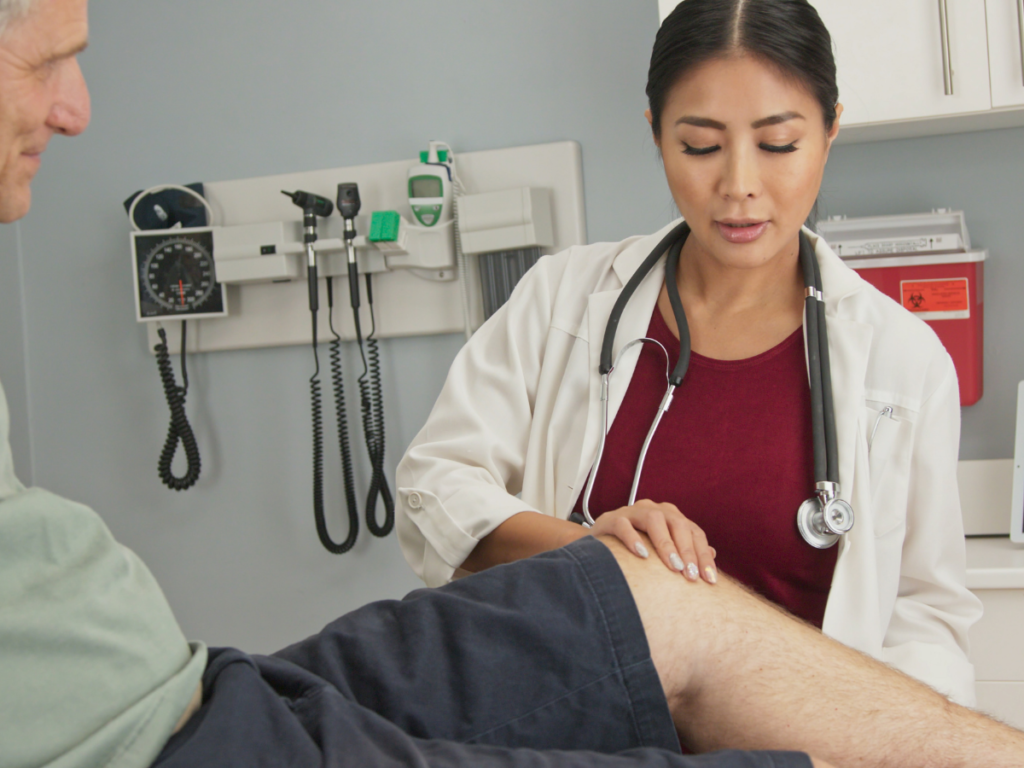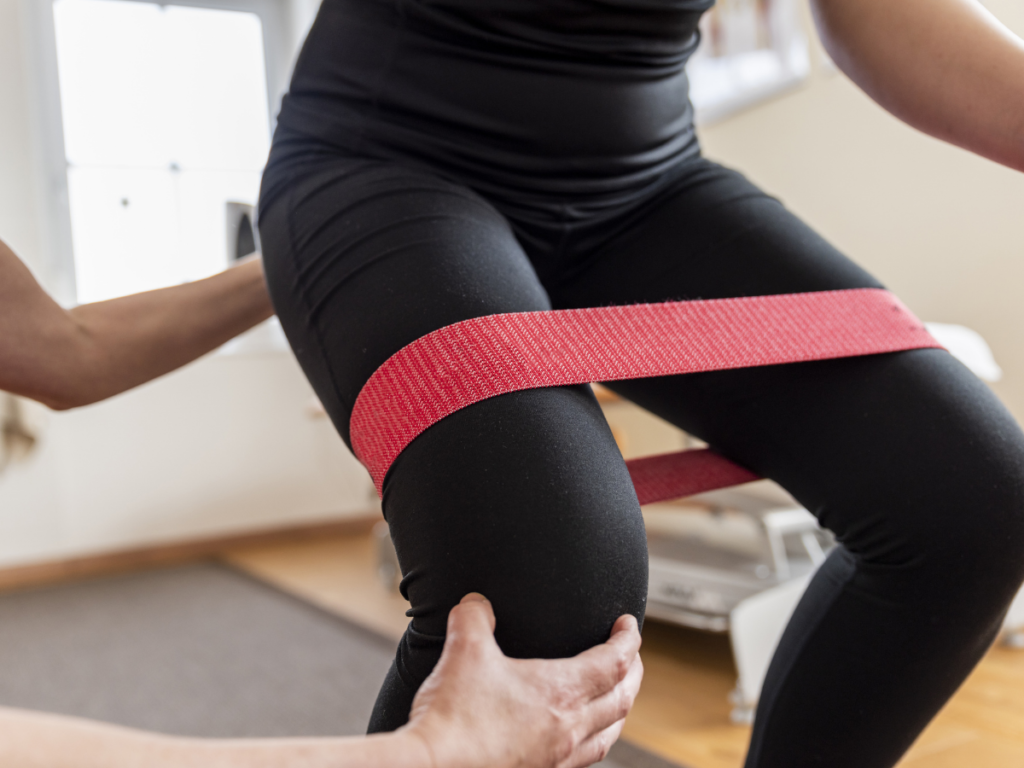
A posterior cruciate ligament (PCL) injury is the strain or tear of the PCL, a sturdy, fibrous material that connects the femur (thighbone) to the tibia (shinbone). It crosses behind the anterior cruciate ligament (ACL), forming an ‘X’ at the centre of the knee. Whilst a PCL injury is generally less severe than an ACL injury, it is still really important you seek advice from your physiotherapist and follow a tailored rehabilitation program to make sure you get back to doing the things you love as soon as possible.
Symptoms of a PCL Injury

Depending on the severity, symptoms of a PCL injury can be felt at the time of impact or may go unnoticed for a number of days, with pain and swelling gradually worsening.
Symptoms usually involve pain behind the knee as well swelling in the area. You may find it difficult or painful to walk and balance.
Injuries to other ligaments can occur at the same time as a PCL injury so symptoms can vary depending on which structures are affected.
Causes of a PCL Injury

A PCL injury is caused by an abrupt force against the shinbone, just below the knee, often from falling on to a bent knee or collision. This occurs most commonly in two scenarios – contact sports and car accidents.
In sports, such as football, netball, basketball, or skiing, a PCL injury can occur when an athlete falls on a bent knee when jumping, twisting or when they hyperextend their knee. In a car accident, the PCL can be damaged when a person is thrust forward, hitting the shinbone on the car dashboard.
How to Diagnose a PCL Injury
A clinical knee examination with a physiotherapist will be able to identify signs of a PCL injury. The physiotherapist will likely conduct tests that place strain on the PCL to detect any strains, tears or rupture.
An MRI may be used to identify a PCL tear and look for other injuries that are common alongside a PCL injury such as bone bruising or meniscus (cartilage) damage. An X-ray may be required to rule out broken bones that may have occurred on impact.
Your physiotherapist can provide more information about diagnosing a PCL injury and discuss treatment options with you.
Treatment Options for a PCL Injury

There are a number of different factors that will help decide which is the best way to manage a PCL injury.
For less severe injuries, a non-operative treatment plan can be very effective and should commence immediately.
In more severe cases, where a PCL injury has occurred in conjunction with other ligament tears or bone fractures, surgery may be the best option. This will also depend on a range of other factors including your:
- Age
- Involvement in activities that require a high-performing ACL
- Future plans of physical activity
- Previous injuries
Non-Surgical Treatments
A rehabilitation program is considered the most effective non-surgical option to recover from a PCL injury.
Your physiotherapist will help you develop a program that is specific to you. The program is likely to include exercises that focus on:
- Proprioception (body position awareness)
- Lower limb strengthening and balance
- Reducing pain and inflammation
- Restoring patellofemoral (kneecap) movement
- Technique
For high-performance athletes, an additional focus on sport-specific agility is also recommended.
Surgical Treatments

For more severe cases, especially when combined with other knee injuries, surgery may be the best option. Surgery is most beneficial for athletes or young people, where they will depend more on the use of their PCL in day-to-day life.
Surgery is usually performed arthroscopically, by inserting a fibre-optic camera and thin, long tools through an incision around the knee.
Post-Surgery Rehabilitation

Following surgery, a comprehensive recovery and rehabilitation plan is the most effective way of ensuring good outcomes. It is very important to focus on restoring motion, strength and endurance of the knee to be able to return to regular activity. Your physiotherapist, with guidance from the surgeon, will work with you to develop a program that is tailored for you.
At Home Treatments
In the acute phases (immediately after injury), it is important to follow the P.R.I.C.E.D principles:
- Protect your knee by off-loading and supporting the knee
- Rest your knee to avoid aggravating the injury
- Ice to reduce the swelling and pain
- Compression – you can use a compression bandage to reduce the swelling
- Elevate the knee as best you can to control swelling
- Diagnose – it is important you see a physiotherapist or medical professional so that they can assess and diagnose your knee injury
Physiotherapy Management
Your physiotherapist will spend time explaining the injury, answering any questions you have, and working with you to develop your rehabilitation plan. During the initial healing period, your physiotherapist will use different manual therapy and exercise strategies to help reduce the pain and swelling. A compression bandage may be provided to help control the swelling. The physiotherapist may also use different taping or bracing techniques to support the knee and facilitate optimal healing of the ligament. Sometimes crutches will be needed to keep the load off your knee.
FAQs
How can I prepare for a physiotherapist appointment?
A physiotherapist will want to understand your area of concerns by discussing any factors that may contribute to your pain or immobility.
It is recommended that you note down any symptoms you are experiencing and when they began, your personal and family medical history, current medications, and any questions you might want to ask during your appointment.
What can I expect when seeing a physiotherapist?
A physiotherapist may conduct a physical examination of your area of concern, discuss your day-to-day activity and medical history, and prescribe a treatment plan for recovery.
When should I see a physiotherapist?
A physiotherapist can help you to reduce or manage pain and immobility throughout your body. If your concerns are impeding on your ability to participate in your regular activities, it may be time to see a physiotherapist.
The longer these concerns are left unattended, the harder they can be to treat down the track.
